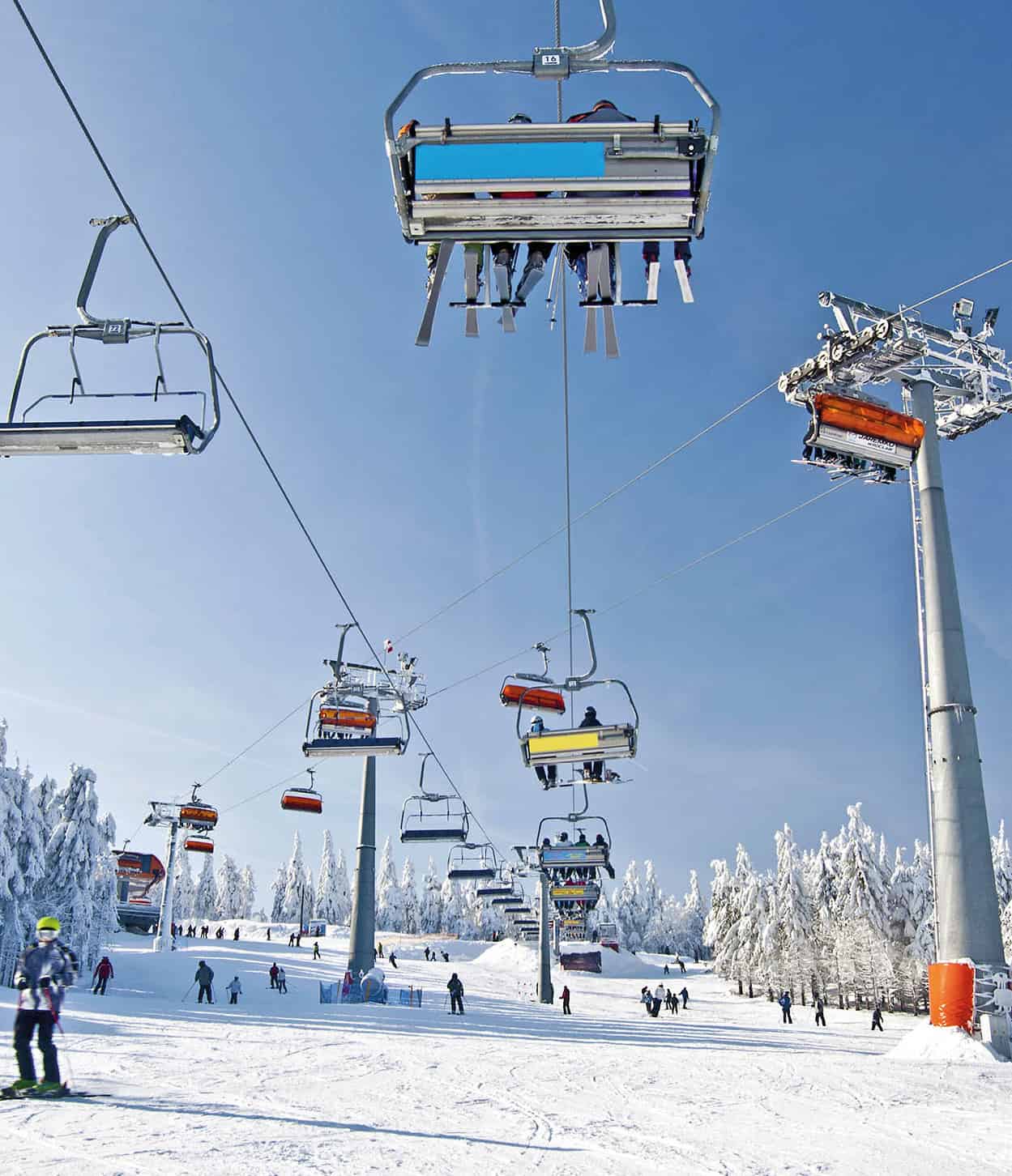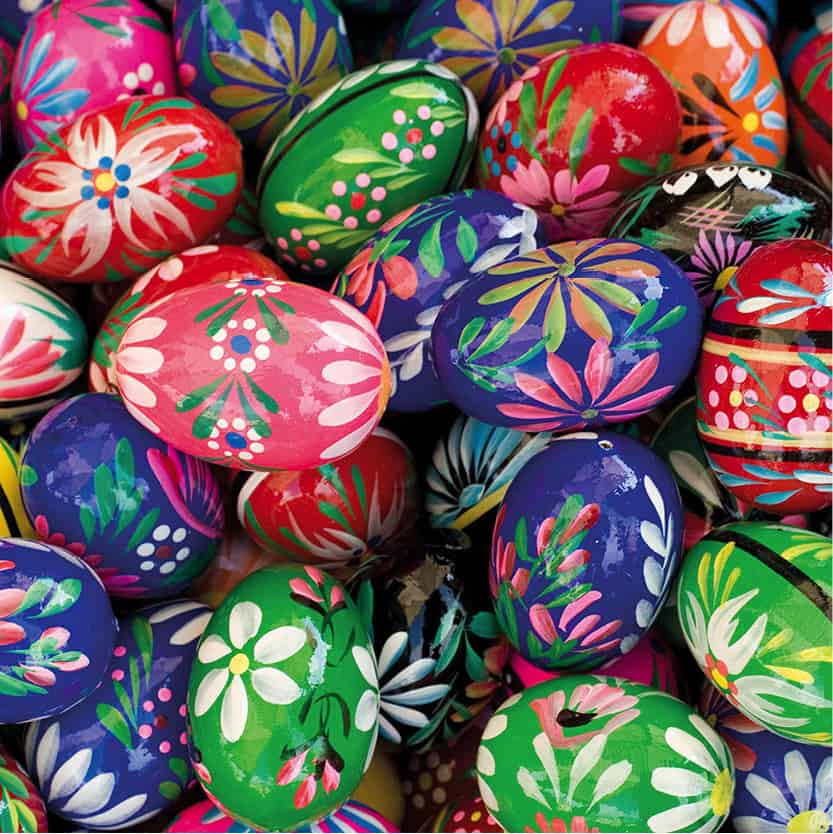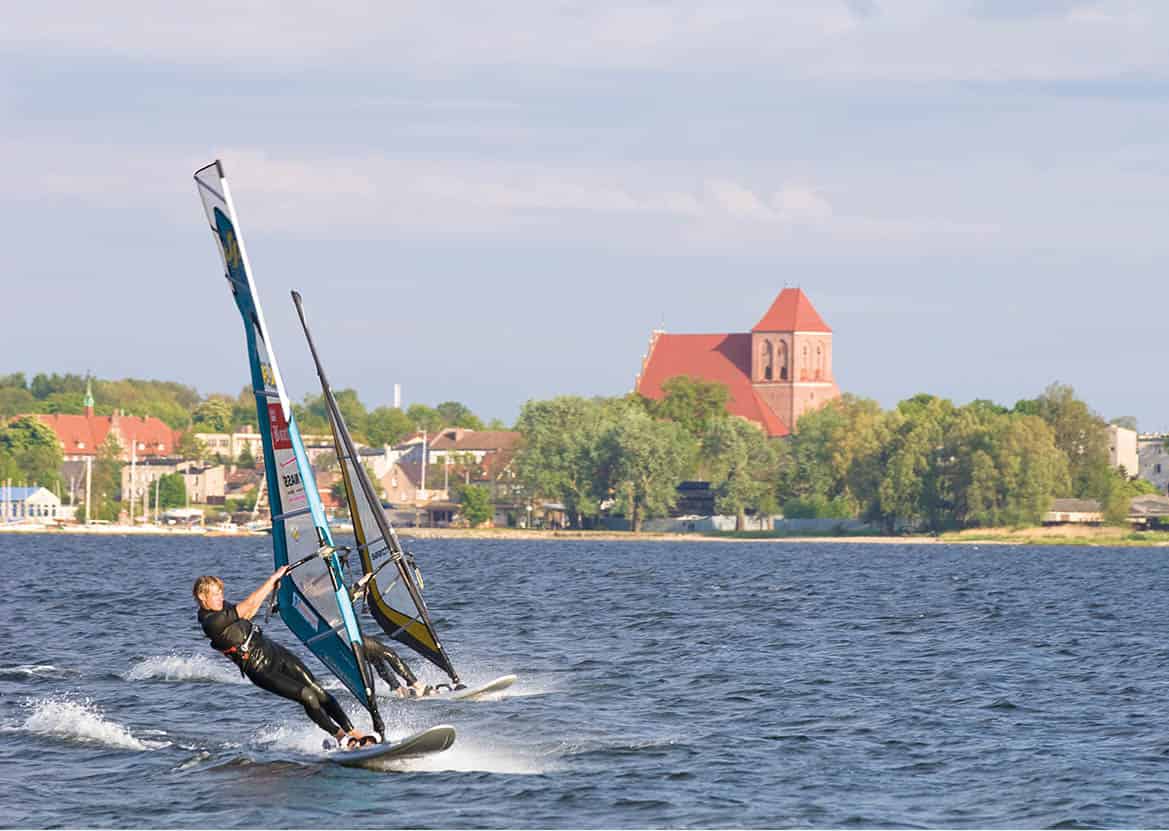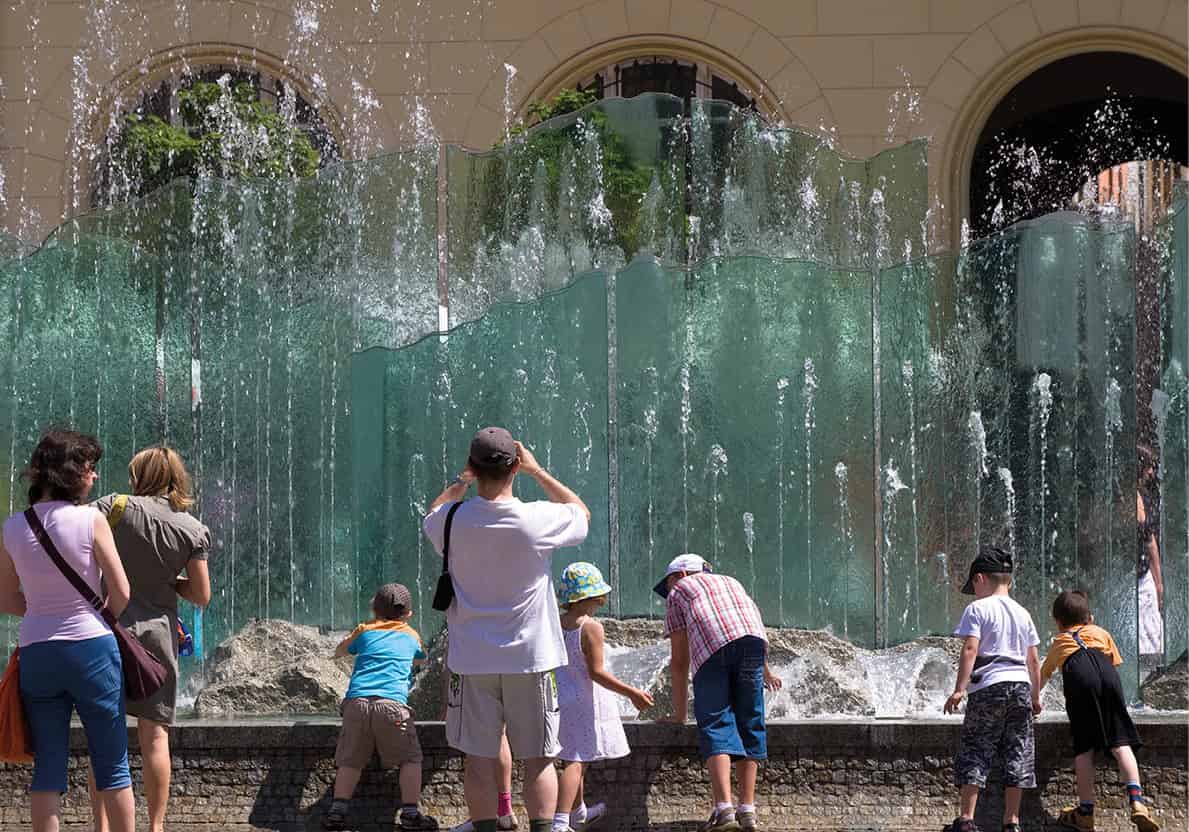From markets stalls and shopping malls to folk bands and opera, Poland offers a wealth of shopping and entertainment opportunities to suit all tastes and budgets. Come sundown, the country doesn’t disappoint either with a wealth of pubs, bars, clubs and live music venues in every major city.
Shopping
The demise of Communism in 1989 and the move to a free-market economy have had a dramatic impact on Poland as a shopping destination. Drab state-owned stores are a thing of the past. The pound, dollar, euro and other currencies don’t go as far today as they once did, but foreign visitors and their Polish counterparts can only be pleased with the opening of trade and vastly improved selection of goods on the market. In major cities like Warsaw and Kraków, Poland doesn’t lag far behind Western Europe and North America for commercial opportunities and you will find branches of many of the global chains here. Even with the end of Communism and inflation, Poland remains considerably cheaper than Western European destinations.
The price is right
Note that the price displayed is the price that is expected to be paid – it is not the done thing to haggle in Polish shops.
Where to Shop
Poland’s development of a market economy has produced a proliferation of stores and boutiques, including many imports from Western Europe and North America that can be found in modern department stores, speciality shops and market stalls.

Skiing in Zieleniec
Shutterstock
For folk art and other handicrafts, start at branches of Cepelia (http://cepelia.pl) stores, a national chain of folk art and souvenir shops in large cities. (Occasionally, they go by different names, even though locals invariably call them Cepelia.) For antiques, the dominant player is the Desa (www.desa.pl) chain (though there are many smaller, independent dealers as well). Poland has a rich and thriving tradition of graphic art and the best places in the country to look for Polish posters are: in Kraków, Galeria Plakatu Kraków (ul. Stolarska 8–10; www.cracowpostergallery.com); and in Warsaw, Galeria Polskiego Plakatu (Rynek Starego Miasta 23; www.poster.com.pl); Galeria Grafiki i Plakatu (ul. Hoża 40; www.galeriagrafikiiplakatu.pl) and the Poster Museum (Muzeum Plakatu; www.postermuseum.pl) at Wilanów Palace.

Baltic amber for sale in Gdańsk
Shutterstock
Speciality shopping markets include the unmissable Cloth Hall stalls, loaded with crafts and amber jewellery, in Kraków, whose history is as long as the city’s; Warsaw’s swanky, boutique-lined ul. Nowy Świat; and ul. Mariacka in Gdańsk’s Main Town for amber jewellery. An interesting open-air market in Warsaw is the Koło Bazaar, in Wola. In Kraków, the best flea markets are on Sunday mornings in Plac Nowy in Kazimierz and next to Hala Targowa on ul. Grzegórzecka. In Gdańsk, the covered market (Hala Targowa) is at pl. Dominikański 1.
Good sources for local shops and markets in Warsaw, Kraków and Gdańsk are the local editions of the In Your Pocket guide, which features individual store listings. See www.inyourpocket.com for more information.
Bargaining is generally only acceptable at the large open-air markets, though if you ask for a discount at an antiques store or art gallery, you may well be granted one.
What to Buy
Art and antiques. You’ll find excellent antique furnishings and religious art throughout Poland, though the best pieces tend to wind up in the wide spectrum of shops and galleries in Warsaw and Kraków, and to a lesser extent cities like Gdańsk and Poznań. Religious icons from the Orthodox Church in Russia can be found, as a large black market in stolen icons exists throughout Central and Eastern Europe, although officials are understandably touchy about their export, even when the item in question is not originally from Poland. Strict export restrictions apply, see Visas and entry requirements, click here.
Amber
This attractive fossilised tree resin (not a semi-precious stone) is available in many shades, from yellow to brown, and grades of clarity. The cities near the Baltic Sea, Gdańsk and Gdynia, have an abundance of amber and excellent shops, often dealing in unique pieces. Be careful not to buy amber on the street, as it is likely to be fake; look for a sign of the Amber Association of Poland (‘Societas Succinorum in Polonia’, www.amber.org.pl) in shop windows as a guarantee of quality and authenticity.
Ceramics and pottery. Distinctive Kashubian pottery known as Ceramika Artystyczna Bolesławiec is sold the world over but is considerably cheaper in Poland.

Painted wooden eggs, a typical Polish souvenir
Corrie Wingate/Apa Publications
Folk art. Rustic Poland excels at folk art and handicrafts, including hand-carved wooden (usually religious) figures; leather goods from the Tatra Mountains; embroidery and lace; hand-painted eggs (especially at Easter); and colourful naïve art and glass paintings, especially from Zakopane.
Music. CDs from Polish composers are available in record shops in major cities. The most recognisable to Western listeners are probably composers Frédéric Chopin, Krzysztof Penderecki and Henryk Górecki, who unexpectedly scored an international best seller with his Symphony No. 3 in the early 1990s. A contemporary film composer, Zbigniew Preisner, who wrote the scores for the Polish director Krzysztof Kieślowski’s films, including The Double Life of Veronique, Dekalogue and the Three Colours trilogy: Red, White and Blue, is worth seeking out. Of special note is a recording of the best of Preisner recorded live in the Wieliczka Salt Mines outside Kraków. You can also find recordings of Polish folk music, such as traditional górale, or highlander, tunes from the Tatras.
Poster art. Poster design is a thriving and valued art form in Poland, and some of the finest poster artists in the world are Polish. You’ll find vintage and contemporary posters for familiar Western films and the greatest hits of theatre and opera, as well as more obscure titles. Contemporary poster designers include Górowski, Stasys (Stasys Eidrigevicius), Andrzej Pągowski, Rafał Olbiński and Wiktor Sadowski.
Vodka. For an authentic bottle of Polish vodka, or wódka (pronounced ‘voot-ka’), look for Wyborowa, Extra Żytnia or any flavoured vodka, such as Żubrówka (with a blade of bison grass in the bottle) and Wiśniówka (cherry-flavoured).
In your pocket
For schedules of opera and classical music concerts, see the local editions of the English-language publication In Your Pocket, www.inyourpocket.com, which contain good round-ups of nightlife in Warsaw, Kraków and Gdańsk, and Warsaw Insider, a free monthly publication for Warsaw.
Entertainment
Nightlife in Warsaw and Kraków is very cosmopolitan, with a full range of cultural offerings, including theatre, opera, ballet and classical music. In other cities, there is less variety, though both Gdańsk and Poznań have lively programmes of fine arts. Tickets for performances are much more accessibly priced than in most of Western Europe or North America.
On the pop culture front, you’ll find jazz combos and films from around the world. Big-name international pop and rock bands are now routinely including Poland in their touring schedules. You’ll find a range of bars, pubs, cafés and nightclubs in the cities, as well as a handful of casinos.

Kraków’s Słowacki Theatre
Shutterstock
Performing arts. In the principal cities, Poles are stalwart supporters of the performing arts. In Warsaw, the Great Theatre – National Opera (pl. Teatralny 1, tel: 022 692 0200, www.teatrwielki.pl) is the foremost venue in Poland for opera and ballet; Kiri Te Kanawa, Kathleen Battle and José Carreras have all sung here. For classical music concerts, the National Philharmonic Hall (ul. Jasna 5, tel: 022 551 7111, www.filharmonia.pl) and the intimate Opera Kameralna (al. Solidarności 76b, tel: 022 628 30 96, www.operakameralna.pl) are among the nation’s best. There are also occasional concerts at the Royal Castle on pl. Zamkowy (tel: 022 355 5170). In Kraków, the Juliusz Słowacki Theatre (pl. Św. Ducha 1, tel: 012 424 4500, www.slowacki.krakow.pl) stages opera, as well as musicals, plays and concerts. Opera Krakowska (ul. Lubicz 48; tel: 012 296 6262; www.opera.krakow.pl) concentrates on productions of classical operas; while Kraków Filharmonia (ul. Zwierzyniecka 1; tel: 012 619 8721; www.filharmonia.krakow.pl) ranges beyond symphonies and hosts other orchestras, too. Concerts are also held at St Mary’s Cathedral, SS Peter and Paul Church and on Wawel Hill in Kraków, and in summer at the Chopin Monument in Warsaw’s Łazienki Park. In Gdańsk, the State Baltic Opera (Al. Zwycięstwa 15, tel: 058 763 4912/13, www.operabaltycka.pl) is one of the best in Poland, holding opera and symphonic concerts, while chamber music concerts are held at the Baltic Philharmonic Hall (Ołowianka 1, tel: 058 320 6250, www.filharmonia.gda.pl). In Poznań, opera is performed at the Teatr Wielki (ul. Fredry 9, tel: 061 659 0200, www.opera.poznan.pl) and classical music at Filharmonia Poznańska (ul. Św. Marcin 81, tel: 061 852 4708, www.filharmoniapoznanska.pl). Poznań is also well known for its acclaimed ballet company, the Polish Dance Theatre-Poznań Ballet (ul. Kozia 4, tel: 061 852 4242/41, www.ptt-poznan.pl).
Drama is staged almost entirely in Polish, tending to exclude most foreign tourists. Acting and directing are of a very high standard, though, and adventurous theatregoers who don’t mind not understanding the language in order to see first-rate acting and production will find plenty of excellent performances, especially in Kraków, the epicentre of the Polish theatre world. The Stary Teatr, or Old Theatre (ul. Jagiellońska 1, tel: 012 422 8020, www.stary-teatr.pl) was Poland’s first playhouse and is beautifully restored with a main stage and two ancillary stages. In Warsaw, top musicals of the Andrew Lloyd Webber variety land at Roma (ul. Nowogrodzka 49, tel: 022 628 8998, www.teatrroma.pl).
Cinema. Poland has an enviable cinematic tradition and has produced great film directors who’ve gone on to international success, including Krzysztof Kieślowski, Andrzej Wajda and Roman Polański. Poles are dedicated moviegoers, so in the cities you’ll find plenty of subtitled Western films competing with homegrown products, showing at good, Dolby sound-equipped cinemas. Film admissions are cheap by comparison with many countries. Look out for the Warsaw Film Festival in October every year.

Poland’s Buddha Bar, Kraków
Gregory Wrona/Apa Publications
Clubs and bars. Poland’s towns and cities teem with bars, pubs and clubs, and Poles are known as heavy drinkers, though today they drink more beer (piwo) than vodka and other spirits. You’ll find Irish and English pubs and nightclubs across Poland.
Bars in atmospheric cellars, and others above ground, have proliferated in recent years in Kraków’s Old Town. With so many students in town, they’re usually packed. There are so many it is difficult to single out only a few, but among the most interesting are: Prozak 2.0 (pl Dominikański 6); Art Club Błędne Koło (ul. Bracka 4); Stalowe Magnolie (ul. Św. Jana 15), which has live music and boudoir-style backrooms; Cień (next door at ul. Św. Jana 15); U Louisa (Rynek Główny 13); and, in Kazimierz, a nightlife hub where new places are opening all the time, Alchemia (ul. Estery 5) and Pub Propaganda (ul. Miodowa 20).
The distinction between cafés and bars is sometimes difficult to ascertain, but some of the many excellent cafés in Kraków include: Camelot (ul. Św. Tomasza 17), , the historic Jama Michalika (ul. Floriańska 45) and Café Szzafé (ul. Felicjanek 10); while Singer (ul. Estery 20) is the quintessential Kazimierz café.
For jazz and blues clubs in Kraków, try Harris Piano Jazz Bar (Rynek Główny 28); U Muniaka (ul. Floriańska 3), Klub Indigo (ul. Floriańska 26) and Piec’Art (ul. Szewska 12).
Warsaw doesn’t have quite as appealing a cluster of bars in one pub-crawl ready area, but the capital certainly has its share of watering holes and cafés. It has a mini collection of Irish pubs, including Jimmy Bradley’s Irish Bar (ul. Sienna 39), Irish Pub (ul. Miodowa 3) and Cork Irish Pub (Al. Niepodległości 19). Other bars are Lolek (ul. Rokitnicka 20), the elegant Column Bar in the Hotel Bristol (ul. Krakowskie Przedmieście 42–44). For cocktails try Paparazzi (ul. Mazowiecka 12). Nightclubs include Opera Club (pl. Teatralny 1), Platinum (ul. Fredry 6), and for jazz and blues Tygmont (ul. Mazowiecka 6-8). Gdańsk has a selection of lively pubs in its Main Town. The coolest are Café Kamienica (ul. Mariacka 37–39) and Flisak 76 (ul. Chlebnicka 9–10). For live jazz, check out the Elephant Club (Długi Targ 41–42) or for all kinds of music and more live happenings the studenty Klub Żak (ul. Grunwaldzka 195–197).

Tatra Mountains
iStock
Sports
The most popular sport in Poland, as in most European nations, is football (soccer), although other sports including volleyball, handball, ice hockey, wind surfing and skiing are also popular. Being chosen as one of the host countries for Euro 2012 signalled Poland’s arrival on the sporting world map. The countryside is ideal for outdoor enthusiasts, so visitors interested in horseriding, skiing, fishing and hiking have myriad options.
Golf. If you’re a golf enthusiast, head for the First Warsaw Golf and Country Club (ul. Golfowa, Rajszew, Jabłonna, tel: 022 782 4555, http://fwgcc.pl), an 18-hole course about 30km (19 miles) outside of the capital. Perhaps the best golfing is near the Baltic Sea, at the Postołowo Golf Club (Postołowo, tel: 058 683 7100, http://postolowo.com), 26km (16 miles) south of Gdańsk.
Hiking and walking. The vast countryside of Poland is ideal for leisurely walking and more athletic hiking. One of the best areas for both, especially for serious hikers, are the High Tatra Mountains around Zakopane.
Horse-riding. Equestrian holidays are becoming increasingly popular in Poland; many adventure travel operators offer them – look out for stables belonging to the Polish Equestrian Federation (Polski Związek Jeździecki). If you just want to get in the saddle for a short while, contact Patataj Horse-Riding School (Szkoła Jazdy Konnej, ul. Krótka 9, Kanie, tel: 022 758 5835; www.patataj.com) near Warsaw. There are a couple of dozen stables and riding schools in the environs of the capital (ask at the tourist information centre or your hotel for details).
Skiing. The best place for skiing is Zakopane, at the foot of the High Tatra Mountains in southeastern Poland. Skiing is excellent, inexpensive and very popular with Poles and some foreigners on ski packages, even though facilities lag behind resorts in the Alps and Pyrenees.

Windsurfing in Puck Bay
Gregory Wrona/Apa Publications
Swimming and water sports. In Warsaw, the Victoria, Marriott and Bristol hotels have swimming pools. Less ritzy are these pools: Aquapark Wesolandia (ul. Wspólna 4, tel: 022 773 9191, www.wesolandia.pl), Polna (ul. Polna 7a, tel: 022 825 71 34, www.osir-polna.pl) and Wodny Park (ul. Merliniego 4, tel: 022 854 0130, www.wodnypark.com.pl). Kraków also has several pools open to visitors: Park Wodny (ul. Dobrego Pasterza 126, tel: 012 616 3190, www.parkwodny.pl) is the best year-round, though open-air pools are available in summer. There are also hotel pools at the Copernicus (ul. Kanonicza 16), its sister hotel the Stary (ul. Szczepańska 5) and at the Novotel Kraków Centrum (ul. Kosciuszki 5) and the Sheraton (ul. Powiśle 7).
The most popular areas for boating and other water sports are the Mazurian Lakes district in northeastern Poland and near the towns along the Bay of Gdańsk, on the Baltic Sea.
Football. Football (soccer) is Poland’s most popular spectator sport. Warsaw’s first-division football team is Legia Warszawa (ul. Łazienkowska 3, tel: 022 628 4303, www.legia.com).
Children
Travelling with children in Poland is a matter of being flexible, creative, and putting together activities to keep the kids interested when palaces, castles and rebuilt old towns impress them less than they do their parents. Many of the activities listed below are in the capital, Warsaw, where there is simply a greater abundance of facilities.
Warsaw Zoo (ul. Ratuszowa 1–3, tel: 022 619 4041, www.zoo.waw.pl) has been open since 1928. The habitats of some 4,000 animals, including Siberian tigers, kangaroos, cheetahs, crocodiles, snow leopards and an unusual red panda, are spread across 40 hectares (99 acres). The zoo also has a free-flight bird hall.
Another option for kids in Warsaw is the Teatr Guliwer (ul. Różana 16, tel: 022 845 1677, www.teatrguliwer.waw.pl).

Fountain in the Old Town, Wrocław
Gregory Wrona/Apa Publications
For children with energy to burn, there are water parks and swimming pools in summer, and ice rinks in winter. To go ice skating in Warsaw, check out the Stegny (ul. Inspektowa 1, tel: 022 842 3872, http://aktywnawarszawa.waw.pl/stegny) or Towarzystwo Łyżwiarstwa Figurowego Walley (ul. Kombatantów 60, Julianów, tel: 0515 184 555, www.walley.pl). During winter there is also an ice rink at the National Stadium (www.pgenarodowy.pl). Another fast-paced sport is go-karts. In Warsaw, race the kids over to Pole Position (ul. Graniczna 15, tel: 0606 339 338, or ul. Powstańców Śląskich 126; tel: 0512 597 587, www.pole-position.pl). If your kids like bowling, you’ll find facilities in all the major cities. In the Malta lake district of Poznań, there are many facilities ideal for children, including a man-made ski slope and an exhilarating toboggan run.
For older kids who enjoy hiking and skiing, the area around Zakopane in the Tatra Mountains is the best in Poland. Sure to be popular with kids are the 700-year-old Wieliczka Salt Mines near Kraków (for more information, click here), where you first descend 378 steps, then continue through long corridors and see chapels and figures (including the Seven Dwarves) entirely carved out of salt, and finally zoom up to ground level via a fast and slightly shaky bare-bones elevator.